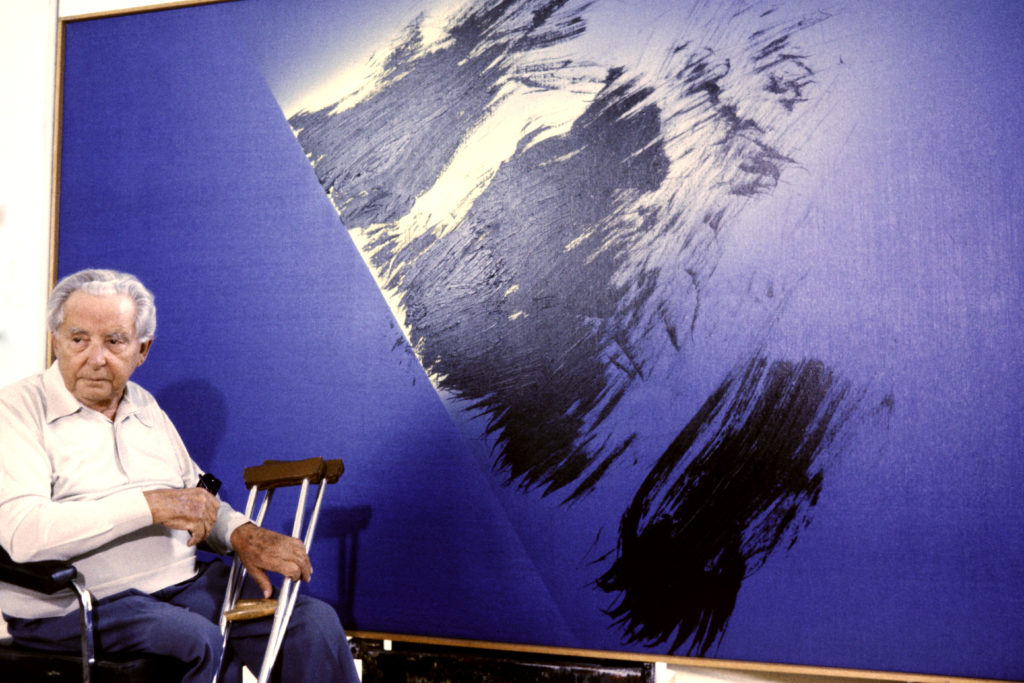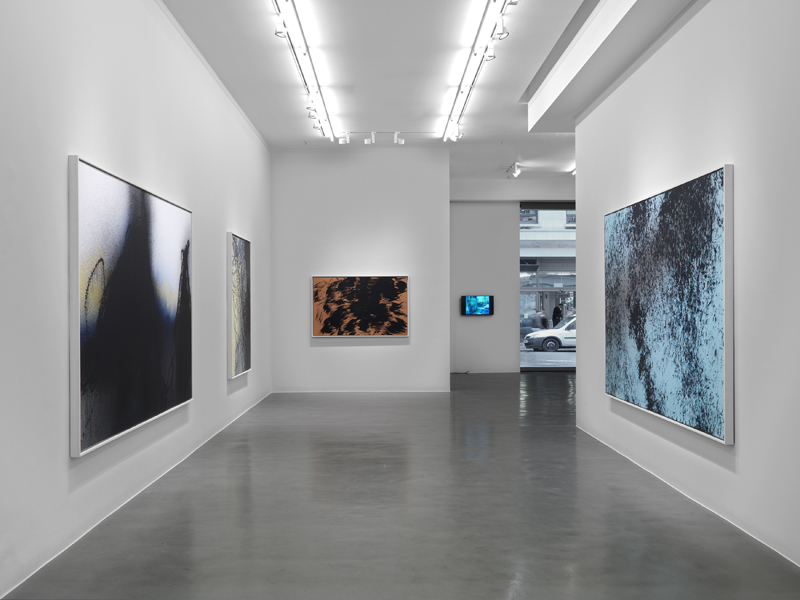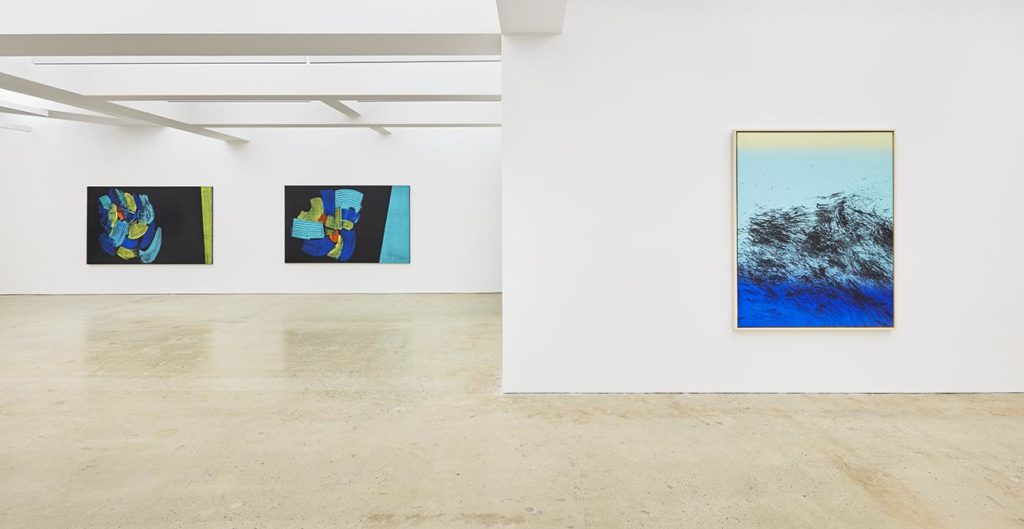Art World
How a Global Network of Dealers Have Remade the Market for Hans Hartung’s Lyrical Abstractions
After a decades-long dormancy, the late painter's work is making a comeback.

After a decades-long dormancy, the late painter's work is making a comeback.

Henri Neuendorf

Until this year, more than four decades had passed since the late German-French abstract painter Hans Hartung’s work was exhibited in New York. But now he is back—and making up for lost time—with simultaneous shows at Nahmad Contemporary and Perrotin.
His market, too, is reflecting the growing interest: In December, Sotheby’s Paris sold a painting by Hartung for $3.1 million, setting a new auction record for the artist.
Hartung’s market was “very strong” in the late ’80s, says dealer Joe Nahmad, but demand for the artist “fell asleep and stayed asleep for quite a long time” following the artist’s death in 1989, at age 85, which coincided with a crash in the market.

Installation view of “A Constant Storm” by Hans Hartung. Photo: courtesy of Perrotin and the Hartung-Bergman Foundation.
Then the gestural abstraction of Hartung and his contemporaries fell out of fashion in the mid-1990s and 2000s. As the art market began to recover, collectors looked toward a young generation of cutting-edge newcomers.
Hartung’s market only began to pick up again around 2014, said the Paris-based art advisor Laurence Dreyfus, at a time when the market’s taste for young artists like the Zombie Formalists had started to fade and buyers were returning toward safer, more established artists. “Before, risky collectors were very active,” Dreyfus said, “and now the risky collectors are more quiet.”
Pascal de Sarthe, a French dealer based in Hong Kong who staged his first Hartung show in 2012, agreed with this view of the shifting market. A growing number of his collectors began to question why they were “collecting overpriced abstract works by contemporary artists who mostly copied a style which was done 80 years ago,” he told artnet News. They found that they could instead buy to “major abstract works from the pioneering Hans Hartung,” de Sarthe said, for “a fraction of the price of his US counterparts from the ’50s.”

Installation view of “Hans Hartung” at Simon Lee, London. Photo courtesy of Simon Lee Gallery, © Hans Hartung / ADAGP, Paris 2018.
Another key moment in the lead-up to Hartung’s current market reawakening came last April when French dealer Emmanuel Perrotin signed a deal to secure worldwide representation of the artist’s estate. In June, the London-based gallerist Simon Lee collaborated with Perrotin to create a shared two-floor space at Art Basel dedicated to major works by Hartung. Simon Lee Gallery opened show of vibrant, late works from the artist’s estate in its London space in January (until February 17).
In the competitive art market such a collaborative approach is rare. But it also gives the artist “further reach,” Nahmad said, “and I think it helps raise awareness and opens up collectors eyes.” Nahmad reported selling a work from the gallery’s most recent Hartung exhibition to a Brazilian collector, while de Sarthe said he has noticed a sharp uptick in interest in the artist’s work from Asian collectors.
So far the collective effort around Hartung—which also included a recent show at Setareh Gallery in Düsseldorf—has proved successful. According to artnet’s Price Database the percentage of offered lots sold at auction has increased by 14 percent over the last five years.

Data: artnet Price Database.
Hartung’s early works from the 1920s and 1930s are almost impossible to find today, de Sarthe said, while top-quality pieces from his most desirable period—the late 1940s to the mid 1950s—are becoming increasingly scarce, and now fetch $1 million or more. Meanwhile, late works from the 1960s to 1980s tend to sell for a few hundred thousand dollars.
It remains to be seen whether this growth will prove sustainable. “Honestly, I don’t know if it will stay in art history, because for me he is not an artist who made a rupture,” Dreyfus said, adding, “I think there could potentially be a strong market because the dealers involved have the money and the capacity to drive the market.”

Installation view of “Hans Hartung” at Nahmad Contemporary. Photo: Tom Powel Imaging, courtesy of Nahmad Contemporary.